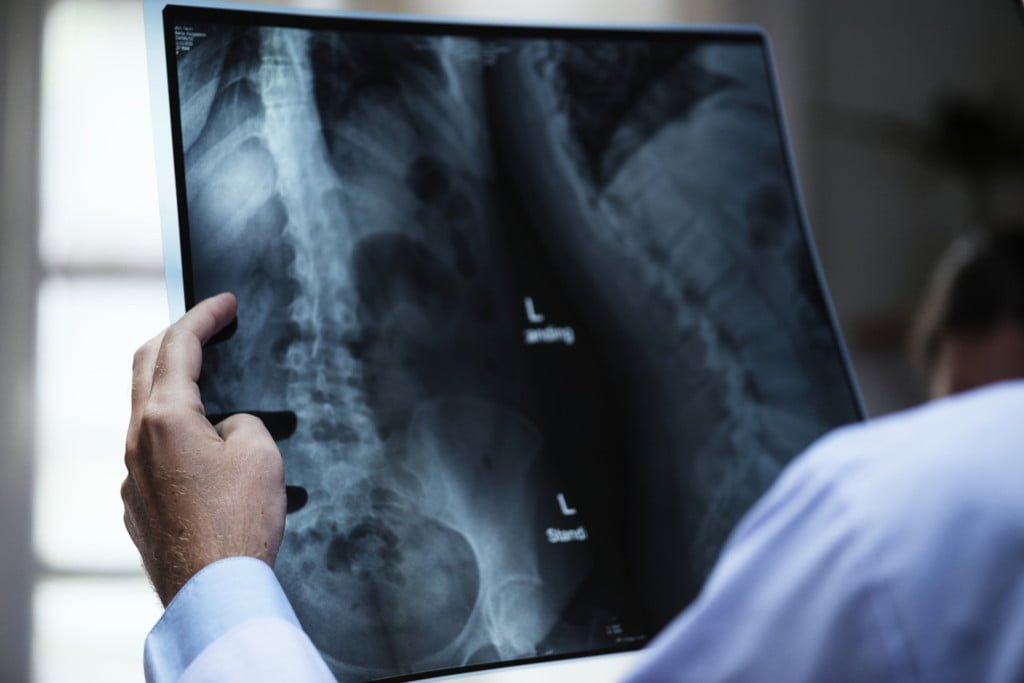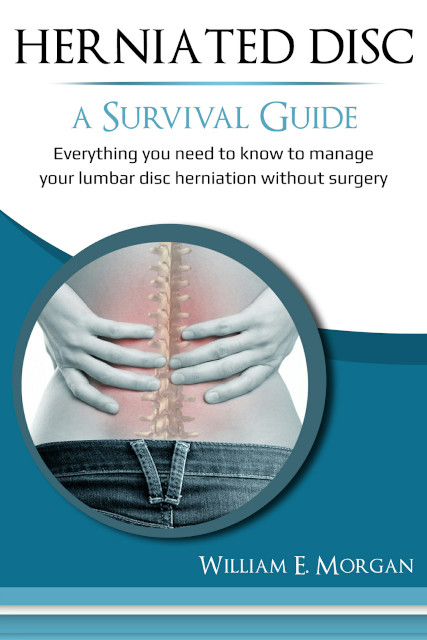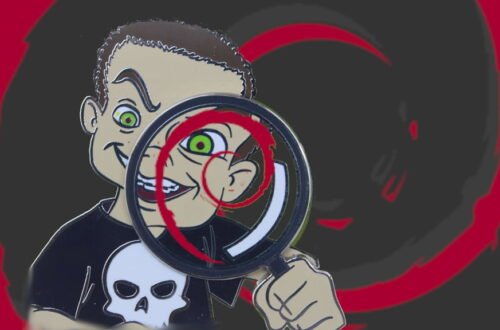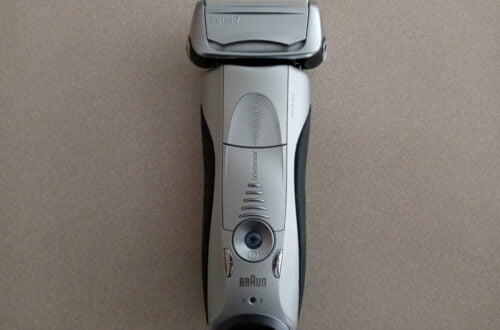
Devices & Resources for Back Pain or Spine Issues
Updated on 2023-05-04
Disclaimer: The following is not medical advice and is provided for informational purposes only.
I have suffered from back pain and spine issues since 2011. In my quest to learn as much as possible and my desire to alleviate my back pain, I’ve come across a number of devices and resources that might be helpful to others suffering from back pain and spine issues.
In 2015, I was diagnosed with a herniated L4 disc. The diagnosis resulted from an MRI that was ordered by my primary care doctor because I was experiencing sciatica in my lower left leg and foot, as well as foot drop in my left foot, due to the L4 herniation pressing against the L4 nerve root. I had heard about disc herniations but didn’t know much about them, so I decided to see what Amazon had in the way of books on the subject. I came across an excellent book that covers disc herniations and other spine issues, as well as a number of tips and recommendations to prevent provoking back pain. The book is titled, Herniated Disc: A Survival Guide, written by Dr. William E. Morgan. Unfortunately, the book is only available in Kindle format. I haven’t been able to find a printed version anywhere.
One good tip from Dr. Morgan’s book is to use a step stool to place one of your feet on while standing in one position for a length of time; e.g. doing dishes, brushing teeth, ironing, etc. Using a step stool to place one of your feet on while standing can help reduce lower back strain. I use and like a small Rubbermaid step stool.
I also discovered and bookmarked a site called ChiroGeek created by Dr. Douglas Gillard. The ChiroGeek site is a treasure trove of information about spine issues and treatments. Dr. Gillard also has a YouTube channel where he has posted some spine-related videos.
I don’t remember if it was during my research about herniated discs, or my research regarding sleep positions and back issues, but I’ve found two items that have been helpful in preventing back pain due to improper body positioning during sleep. I’m a side sleeper and have found a knee pillow and a travel pillow to be beneficial for sleep. The knee pillow keeps the upper leg elevated, preventing unnecessary twisting of the spine. The travel pillow keeps the upper arm elevated, which also prevents unnecessary twisting of the spine.
I began experiencing back pain again in December of 2016 after approximately an 18-month reprieve. By February 2017, I was waking up daily with a stiff, sore back. I decided to re-read the Herniated Disc: A Survival Guide book and was reminded about the importance of movement. Therefore, I began walking and also became interested in stretching and yoga. Once again, I searched the Amazon site and purchased a number of books that interested me in the area of stretching and yoga. I would advise not doing any stretch or yoga pose that involves leaning forward from, or bending from, the waist, both of which can be provocative for those with spine issues.
- Stretching to Stay Young by Jessica Matthews
- Yoga: The Back Pain Cure by Howard VanEs and Dr. Rick Harvey
- Yoga for Beginners by Cory Martin
- Back RX by Vijay Vad and Hillary Hinzmann
I also decided that I needed to confer with someone who was knowledgeable about spine issues. I wasn’t happy with the patient relationship skills of the orthopedic spine surgeon I was referred to in 2015, so I wasn’t interested in going back to him. I then remembered the ChiroGeek site and checked it out again and had forgotten that Dr. Gillard offered a coaching service. I decided to try the coaching service and it is some of the best spine care money I have spent.
Dr. Gillard will take the time to go over your MRI images in detail and possibly point out things that have been missed or not mentioned by other health care providers. Dr. Gillard will also take the time to explain things to you that you may not quite understand, possibly give you another opinion, and provide possible courses of action for dealing with back pain and/or spine issues. Dr. Gillard has brought issues to my attention that weren’t identified by other health care providers, pointed out bad MRI images that I’ve had done, provided tips to prevent provoking back pain, and also provided advice on getting a refund from an MRI facility that overcharged me when they required me to prepay for an MRI and X-ray procedure. I highly recommend Dr. Gillard’s coaching service.
Although the ChiroGeek site has a wealth of information, I also desired to have an additional source(s) of information. I did some research on the Internet and discovered the SpineUniverse site. I subscribe to their free weekly e-newsletter and have found the information provided to be very useful. Did you know that raking leaves can be bad for your back? I would be cautious about performing some of the stretches I’ve seen recommended on the site though. Some of the recommended stretches are provocative in my opinion.
Lastly before moving on, during additional Internet research, I came across Dr. Bookspan’s Academy site by Dr. Jolie Bookspan and decided to purchase one of her books: Health and Fitness in Plain English: How to Be Healthy, Happy, and Fit for the Rest of Your Life. The book was difficult to read because of Dr. Bookspan’s writing style, but I did pick up some good pointers on alternatives to bending when putting things down or picking things up. You may be able to glean some of the tips in the book by scrolling down to the sixth sub-topic, Bending Right Is Fitness As a Lifestyle, on the Fitness Lifestyle page of Dr. Bookspan’s site.
In early June of this year, I fell when I attempted to sit in my office chair that I had moved further away from my desk and forgotten about while retrieving a document from my scanner. One week later, I experienced a pretty bad low back pain flareup. Quite possibly, I had re-injured my L4 disc when I fell. I walked around the house like a feeble old man, supporting myself while walking around the house by holding onto objects; e.g. walls, counters, etc. I can’t remember what prompted the idea, but I thought a walking stick might be useful. As usual, I researched the Internet and came across a post that reviewed walking sticks from several vendors. The vendor I ended up choosing was Brazos Walking Sticks, based in Waco, TX.
According to a blog post on the Brazos Walking Sticks site, a walking stick helps take some of the load off your spine and joints while hiking, but I think a walking stick is helpful for everyday walking as well. I’ve also found a walking stick to be very beneficial while sitting on the toilet. I’ve experienced shots of back pain in the past while sitting on the toilet, possibly due to the fact that your back isn’t supported. I currently own three walking sticks that I’ve purchased from Brazos Walking Sticks and I love them.
Another device that I began to use after my low back pain episode in early June of this year is called Grip ‘n Grab, manufactured by or for Ettore. The Grip ‘n Grab device allows me to retrieve, move, and replace items without bending or leaning. The Grip ‘n Grab device is limited to lifting no more than 5 pounds.
Spine issues and back pain can negatively impact your life; I know from personal experience. I hope some of the devices and resources I’ve provided in this post prove to be helpful to you if you are suffering from spine issues and/or back pain.
If you’re a Linux or MacOS user, you might also be interested in my post on using Onis 2.5 Free Edition under Linux, which will enable you to view your MRI images.
Post header image is courtesy of user rawpixel at Pixabay.
2018-007





